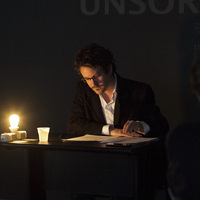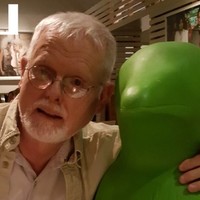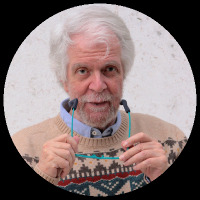
Mario Neve
I'm Full Professor of Geography and a PhD in Urban and Regional Geography. I currently teach Cultural Geography, Geography of Historic Towns and Landscapes, and Geography of Mediterranean.
Research's topics
The geographical models of cultural paradigms in historical perspective (paying special attention to mapping and landscapes' issues);
Communication and information's geographical models;
The map as cognitive tool.
As far as the first and third research topics (geographical model of cultural spaces and the map as cognitive tool) are concerned, the relation between art, science, and perception in mapping has been delved into in the light of recent contributions both from cognitive sciences and science's history.
As far as the second research topic is concerned (communication and information's geographical models), I focused on the subject of technique and the reconsideration of nature/culture relation as it has been debated recently with regard to the notion of 'environment'. The recent works on the notion of cultural heritage as applied to cities and landscapes delve deeper into such perspective.
A provisional outcome of my latest researches is the book Il disegno dell'Europa.
The maps are objects that still arouse curiosity, but whose persuasive power is far from being widely recognized. Although they are used more than ever on a daily basis, since their digital version on mobile devices such as tablets and smartphones makes possible their most varied uses, their true nature is still the domain of specialists, also due to the geographic illiteracy caused by public education's reforms.
In fact, the maps have always fostered the circulation of confidence in a determined vision of the world, that is, in a specific political reading of reality and, at times, they have made possible its design.
So why "Europe's design"? Because this book chooses to follow the thread of geographical representations of what is now called 'European identity', trying to show the role of maps both as a title to an existing territorial rule and as a foreshadowing of a territory to be achieved.
In this book, one wonders: the Europe we know would have been the same without maps? How much of today's difficulty in imagining and implementing an effective European unity can be attributed to a kind of 'cartographic syndrome'?
Phone: +39-544-936786
Address: 1, via degli Ariani I- 48121 Ravenna, Italy
Research's topics
The geographical models of cultural paradigms in historical perspective (paying special attention to mapping and landscapes' issues);
Communication and information's geographical models;
The map as cognitive tool.
As far as the first and third research topics (geographical model of cultural spaces and the map as cognitive tool) are concerned, the relation between art, science, and perception in mapping has been delved into in the light of recent contributions both from cognitive sciences and science's history.
As far as the second research topic is concerned (communication and information's geographical models), I focused on the subject of technique and the reconsideration of nature/culture relation as it has been debated recently with regard to the notion of 'environment'. The recent works on the notion of cultural heritage as applied to cities and landscapes delve deeper into such perspective.
A provisional outcome of my latest researches is the book Il disegno dell'Europa.
The maps are objects that still arouse curiosity, but whose persuasive power is far from being widely recognized. Although they are used more than ever on a daily basis, since their digital version on mobile devices such as tablets and smartphones makes possible their most varied uses, their true nature is still the domain of specialists, also due to the geographic illiteracy caused by public education's reforms.
In fact, the maps have always fostered the circulation of confidence in a determined vision of the world, that is, in a specific political reading of reality and, at times, they have made possible its design.
So why "Europe's design"? Because this book chooses to follow the thread of geographical representations of what is now called 'European identity', trying to show the role of maps both as a title to an existing territorial rule and as a foreshadowing of a territory to be achieved.
In this book, one wonders: the Europe we know would have been the same without maps? How much of today's difficulty in imagining and implementing an effective European unity can be attributed to a kind of 'cartographic syndrome'?
Phone: +39-544-936786
Address: 1, via degli Ariani I- 48121 Ravenna, Italy
less
Related Authors
Daniel Monterescu
Central European University
Tomasz Zarycki
University of Warsaw
Javier Díaz Noci
Pompeu Fabra University
Fernando Zamith
Universidade do Porto
Dylan Trigg
Central European University
David Seamon
Kansas State University
J. H. Chajes
University of Haifa
Louis de Saussure
University of Neuchâtel
David Morris
Concordia University (Canada)
Armando Marques-Guedes
UNL - New University of Lisbon
InterestsView All (29)










Uploads
Books by Mario Neve
In fact, maps have always passed confidence around in a particular worldview, so in a specific political reading of reality and, at times, have made possible its design.
Why then, "Europe's design"? Because this book chooses to follow the thread of the geographical representations of what is now called European identity, trying to show the role of maps both as a certification of a territorial domination in place and as a foreshadowing of a territory to be achieved.
In this book, one wonders: the Europe we know would have been the same without maps? How much of today's difficulty in imagining and implementing an effective European unity can be attributed to some sort of 'cartographic syndrome'?
Papers by Mario Neve
In fact, maps have always passed confidence around in a particular worldview, so in a specific political reading of reality and, at times, have made possible its design.
Why then, "Europe's design"? Because this book chooses to follow the thread of the geographical representations of what is now called European identity, trying to show the role of maps both as a certification of a territorial domination in place and as a foreshadowing of a territory to be achieved.
In this book, one wonders: the Europe we know would have been the same without maps? How much of today's difficulty in imagining and implementing an effective European unity can be attributed to some sort of 'cartographic syndrome'?
anthropocenic catastrophe
We are living in an age in which disasters are a basically constant backdrop of breaking news, but that can be named as natural provided only that we ignore the evolutionary path leading to the present situation.
Namely, the present pandemic – interpreted as a stress test of our model of development – shows itself as a real «anthropocenic catastrophe». As a catastrophe, not only because of its unquestionable tragic impact on lives, but also, following René Thom, as an abrupt evolutionary discontinuity, as a catastrophe of a representation of the world. Anthropocenic, because, despite the ongoing debate over such concept, it is hard to ascribe SARS- CoV-2 to nature.
The present essay aims at framing the pandemic within the model of territoriality by Claude Raffestin, showing how the neoliberal paradigm has taken to the extreme its choices in terms of blind trust in digitalisation and automation (algocracy), regarding decision-making, work, and health, so finally disrupting the evolutionary inner adjustment process through which territorialities have been able through time to settle singularities into a common framework.
The printed version was published on the Wenhui Daily.
The audience has been invited for a stroll through an ideal-typical European medieval town, exemplified by its main public places: the town hall, the cathedral, the piazza, the loggia, the porch. For each of them different examples have been shown, however all belonging to common patterns like a musical theme with variations, so well instancing the unity in variety that is the distinguishing feature of European cultural heritage.
The printed version was published on the Wenhui Daily.
Late Middle Ages represent a crucial turning point in the evolution of European urbanism. The so called ’urban revolution’ (X century) entailed a series of changes at different societal levels — demography, governance, trade, cultural production —, which established long standing patterns characterising most of historic city centres' aesthetic impact and structure still today.
In this lecture, they are presented some characteristics of such urban age, showing an increasing social recognition and acceptance of craft and intermediary skills and activities (artisans, merchants, bankers), which, by being organised in guilds, played a more and more decisive role in cities' decision-making.
Assuming the strong mutual relationship between the city and its representation, the paper develops a concise review of the main attempts to account for the multiplicity and heterogeneity of today’s urban processes. In this view, the paper mainly focuses on the theoretical issues hindering most of the models and tools employed to portray contemporary cities, specifically through the resources of data analysis and GIS.
The critical issue at stake here is that such tools cannot be simply ‘amended’ and/or ‘improved’, since, by their very nature, they face the reality simply trying to reduce its complexity, so taming its contradictions and seeming mismatches.
The meaning of city indeed changed dramatically. The issue of urban cultural heritage itself concerns more and more countries of all continents.
The theme of «creative cities» has been very developed and articulated since it was formulated, in particular by Charles Landry, in the eighties.
Programs like the European Capitals of Culture certainly belong to this field, which are still a great ambition for many munici- palities since 1985.
This theme, in a broad sense, also applies to other phenomena, less visible but no less important: those that reveal a general willingness, exacerbated by the crisis, to assume more and more a role of active citizenship.
The Summer School of Bologna University – Ravenna Campus, in coordination with the ISES Summer University (Institute for Social and European Studies and Corvinus University of Budapest), addresses this issue by following both paths: creative cities more traditionally designed, and new «creative communities», combining the theoretical and methodological perspec- tives with the analysis and development of practical case studies. The annual Summer School has the dual aim to train young scholars in this new vision of the urban, encouraging them to apply the new knowledge to their areas of study and intervention, and to foster debate and critical exchange between experts, scholars, and students.
The geographic area the program will primarily focus on is the Mediterranean (including the Adriatic-Ionian macro-region as the area of interest more immediate and specific), while the partner ISES will provide the program his long research and training experience on the area of Central Europe.